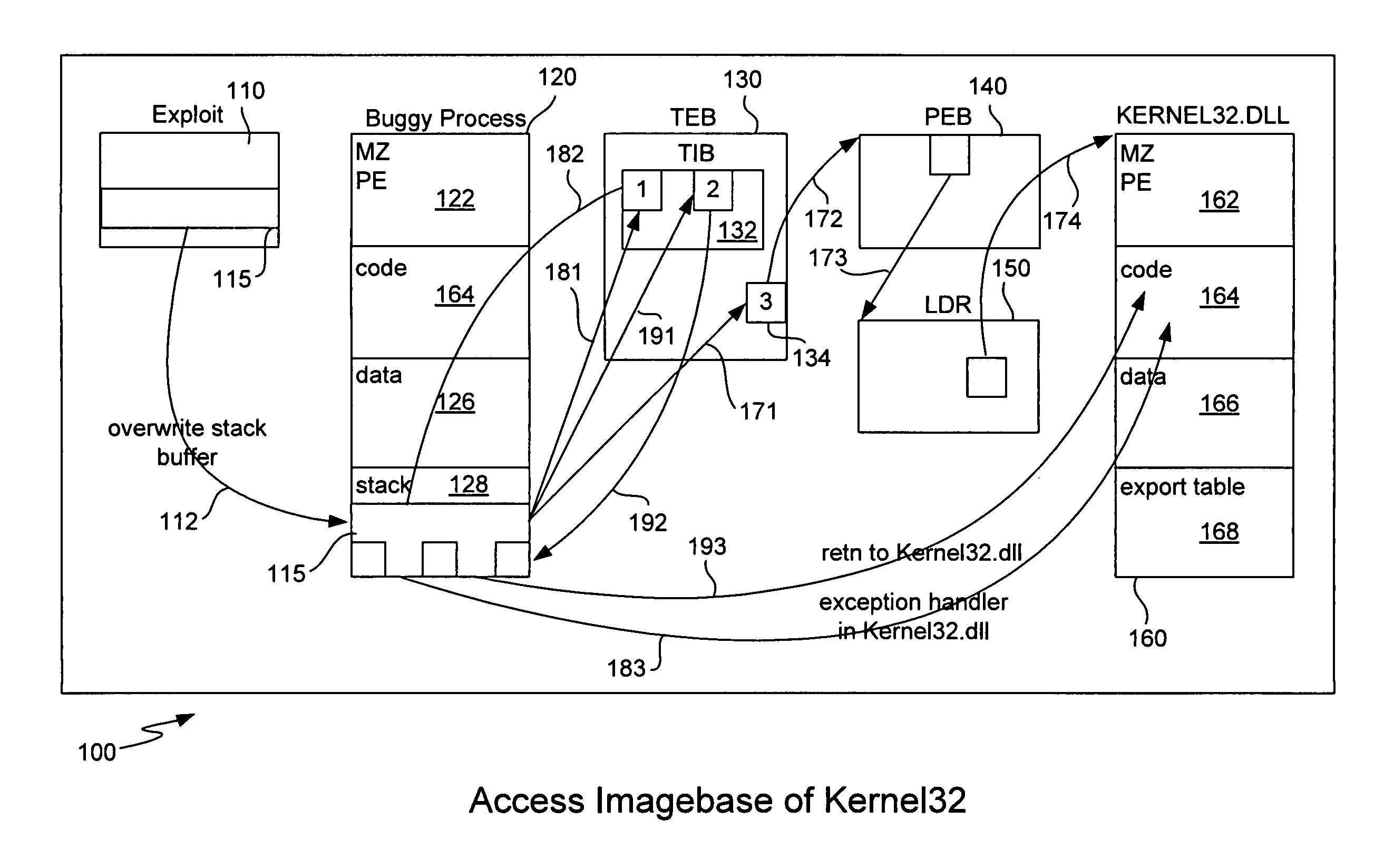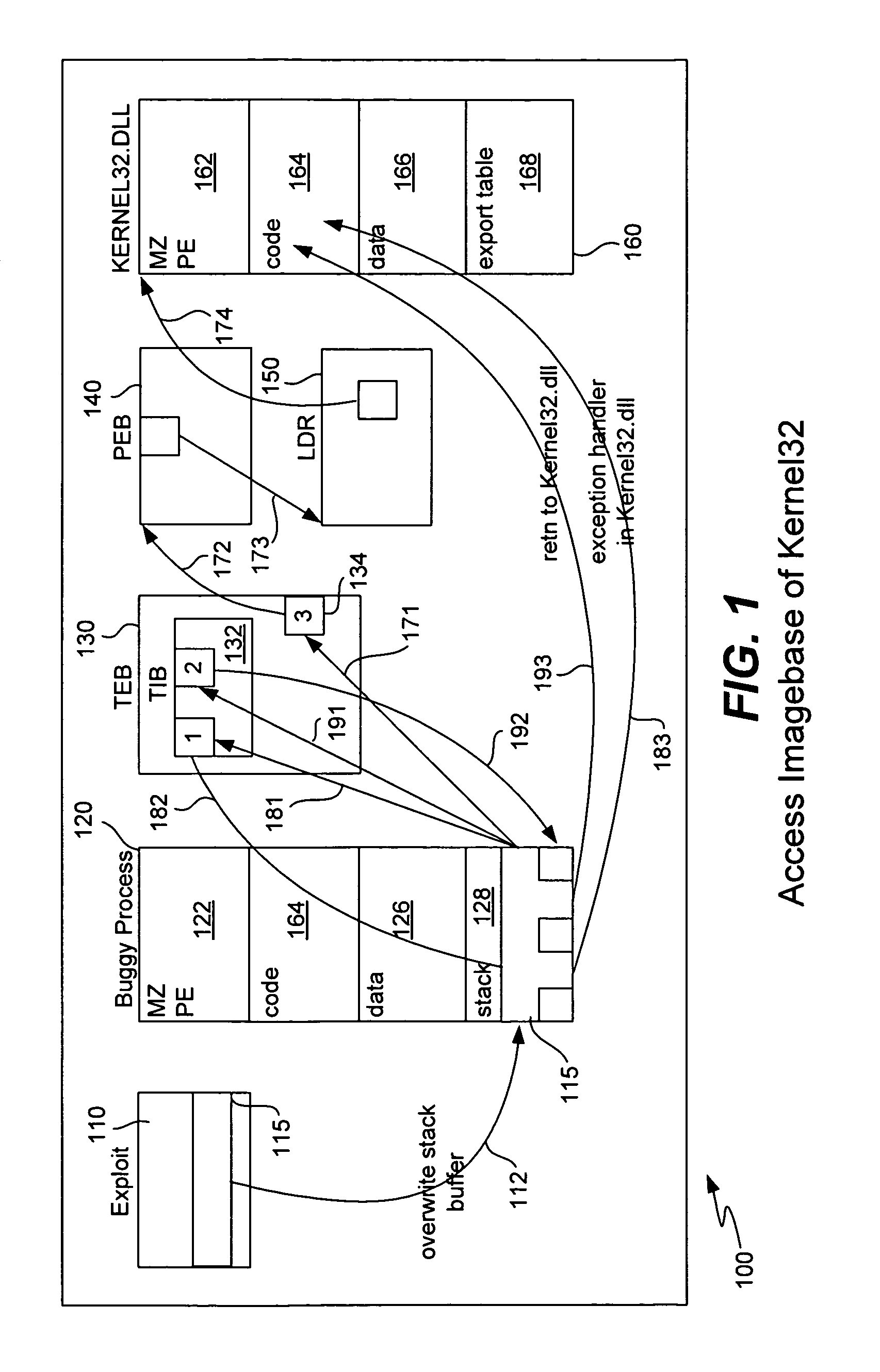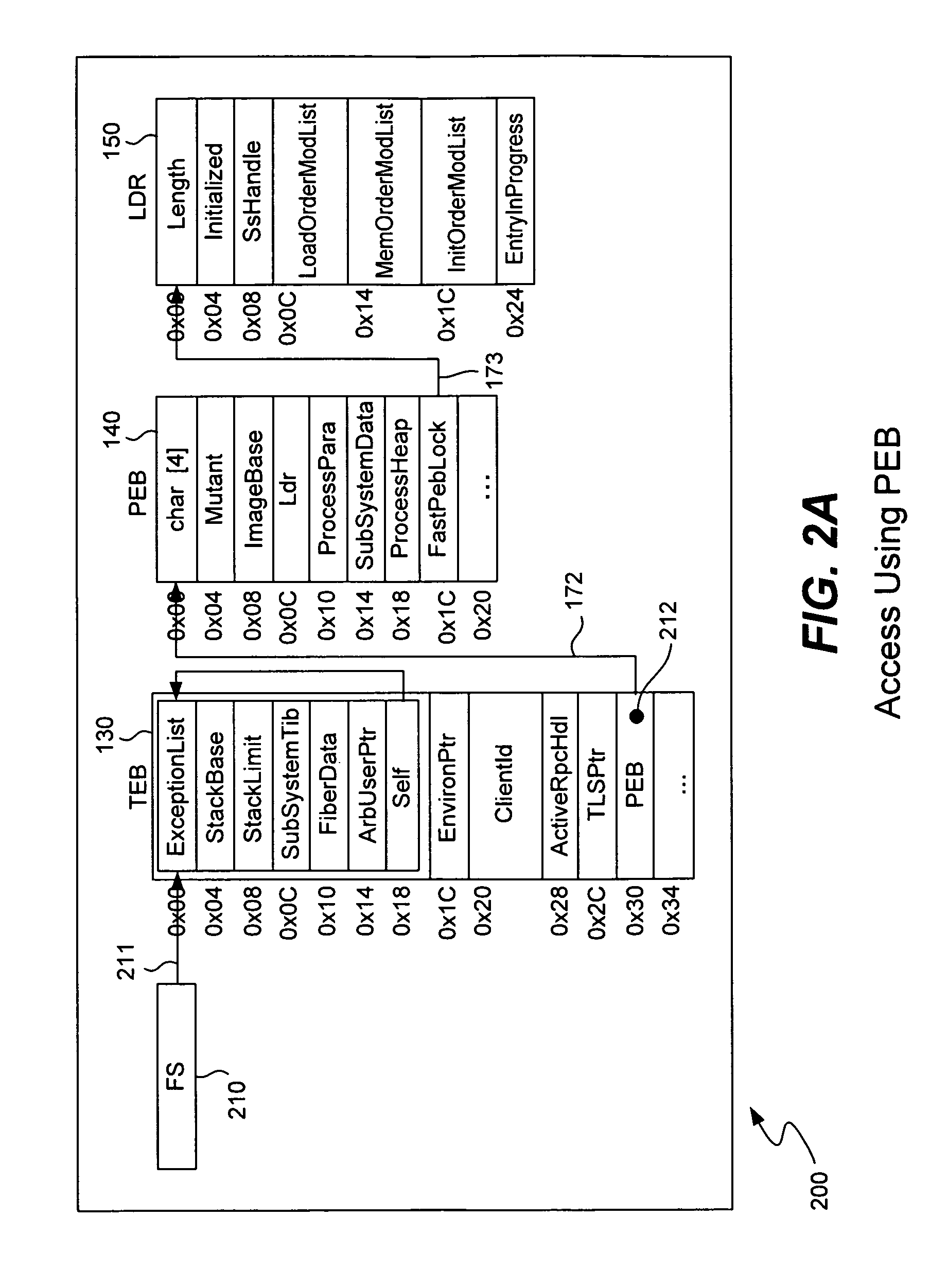Generic shellcode detection
a shellcode and detection technology, applied in error detection/correction, unauthorized memory use protection, instruments, etc., can solve problems such as buffer overflow attacks, many software vulnerabilities, and extra data overwriting adjacent memory locations
- Summary
- Abstract
- Description
- Claims
- Application Information
AI Technical Summary
Benefits of technology
Problems solved by technology
Method used
Image
Examples
Embodiment Construction
[0019]As described above, buffer-overflow exploits attack a vulnerable program (or function or process) with an input string containing malicious code, i.e., the shellcode. The attack takes advantage of the fact that the vulnerable program performs faulty checking (or does not perform any checking) on the length of the input string, and can thus overwrite data on the stack. The malicious individual typically crafts the input string in such a way that it overwrites specific data entries on the stack, thus allowing the malicious code to take over control of execution.
[0020]A normal program accesses APIs as follows. Under a Microsoft operating system, the compiler builds an import table for all of the APIs needed by the executable code, and the loader updates the table entries with the actual API addresses at run time. But, when an exploit such as a buffer overflow attack executes under a Microsoft operating system (or under any similar operating system), the shellcode cannot call APIs...
PUM
 Login to View More
Login to View More Abstract
Description
Claims
Application Information
 Login to View More
Login to View More - R&D
- Intellectual Property
- Life Sciences
- Materials
- Tech Scout
- Unparalleled Data Quality
- Higher Quality Content
- 60% Fewer Hallucinations
Browse by: Latest US Patents, China's latest patents, Technical Efficacy Thesaurus, Application Domain, Technology Topic, Popular Technical Reports.
© 2025 PatSnap. All rights reserved.Legal|Privacy policy|Modern Slavery Act Transparency Statement|Sitemap|About US| Contact US: help@patsnap.com



